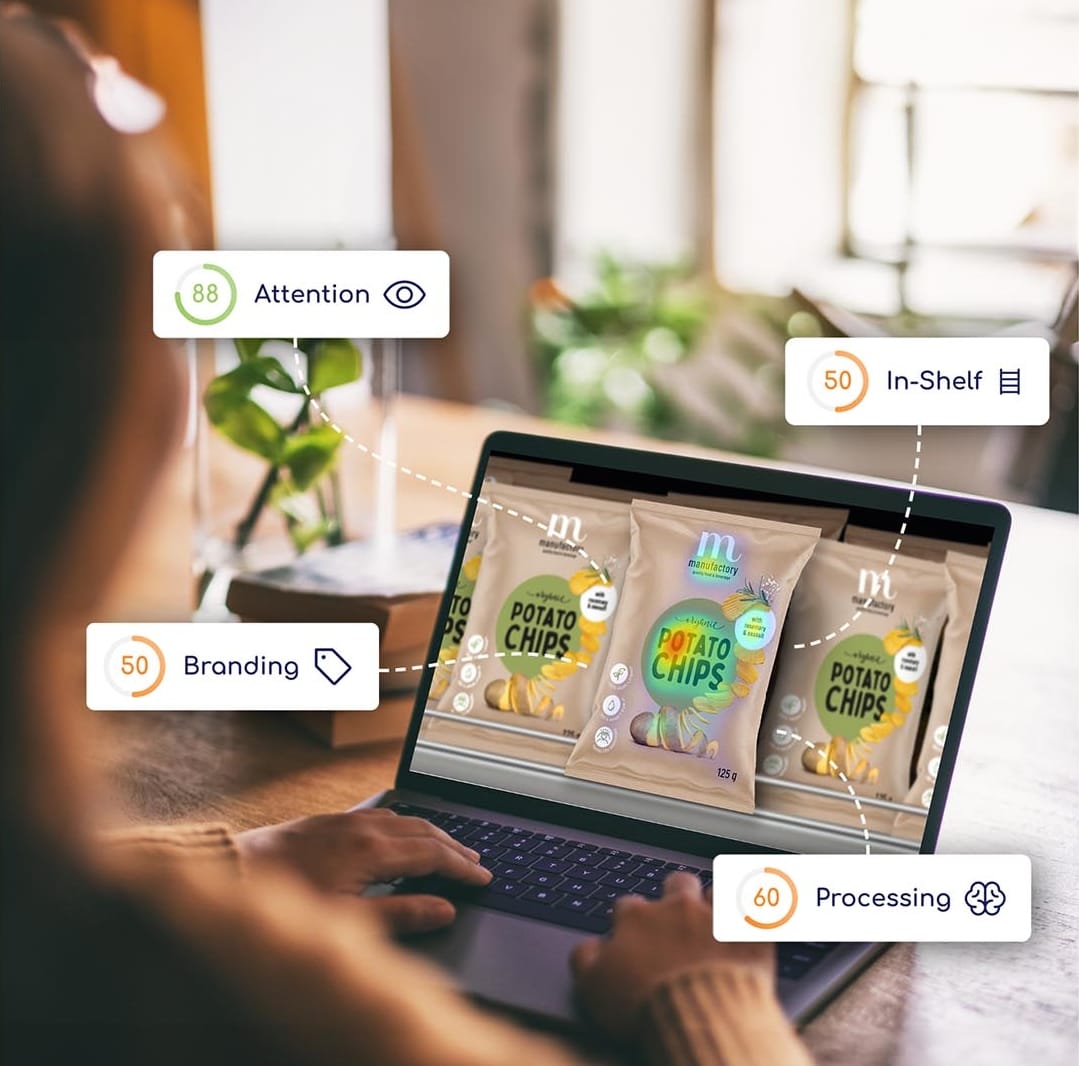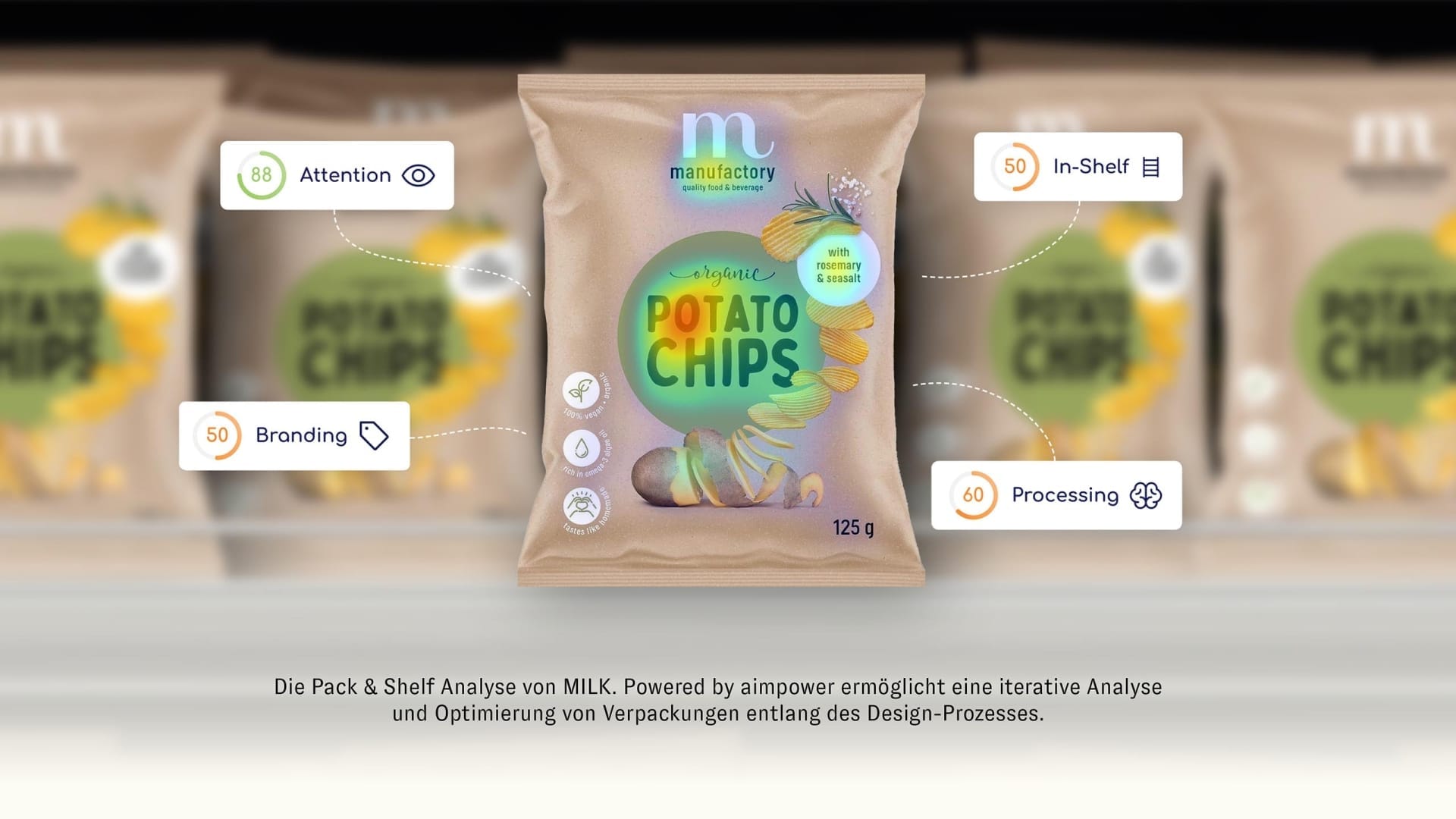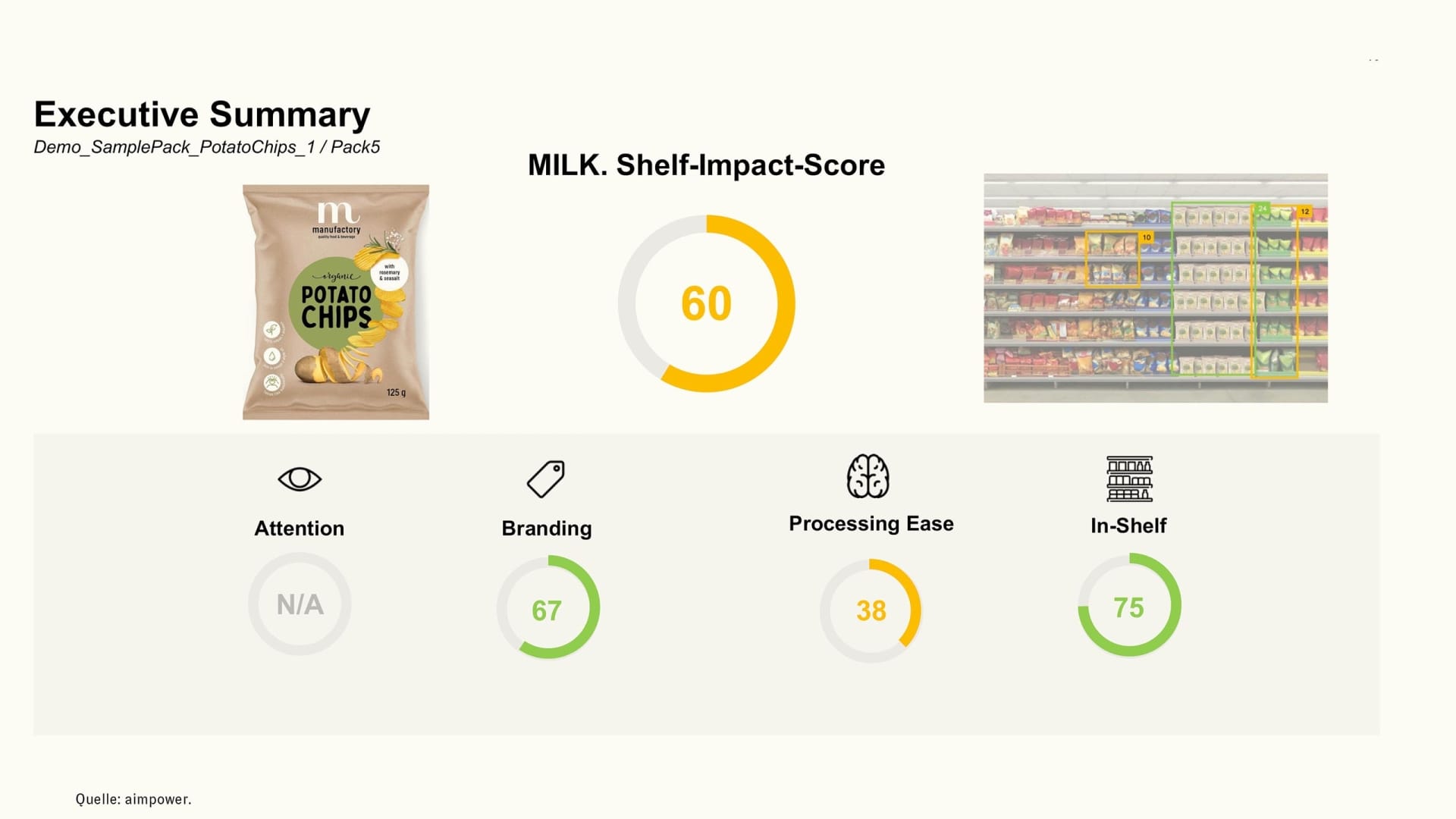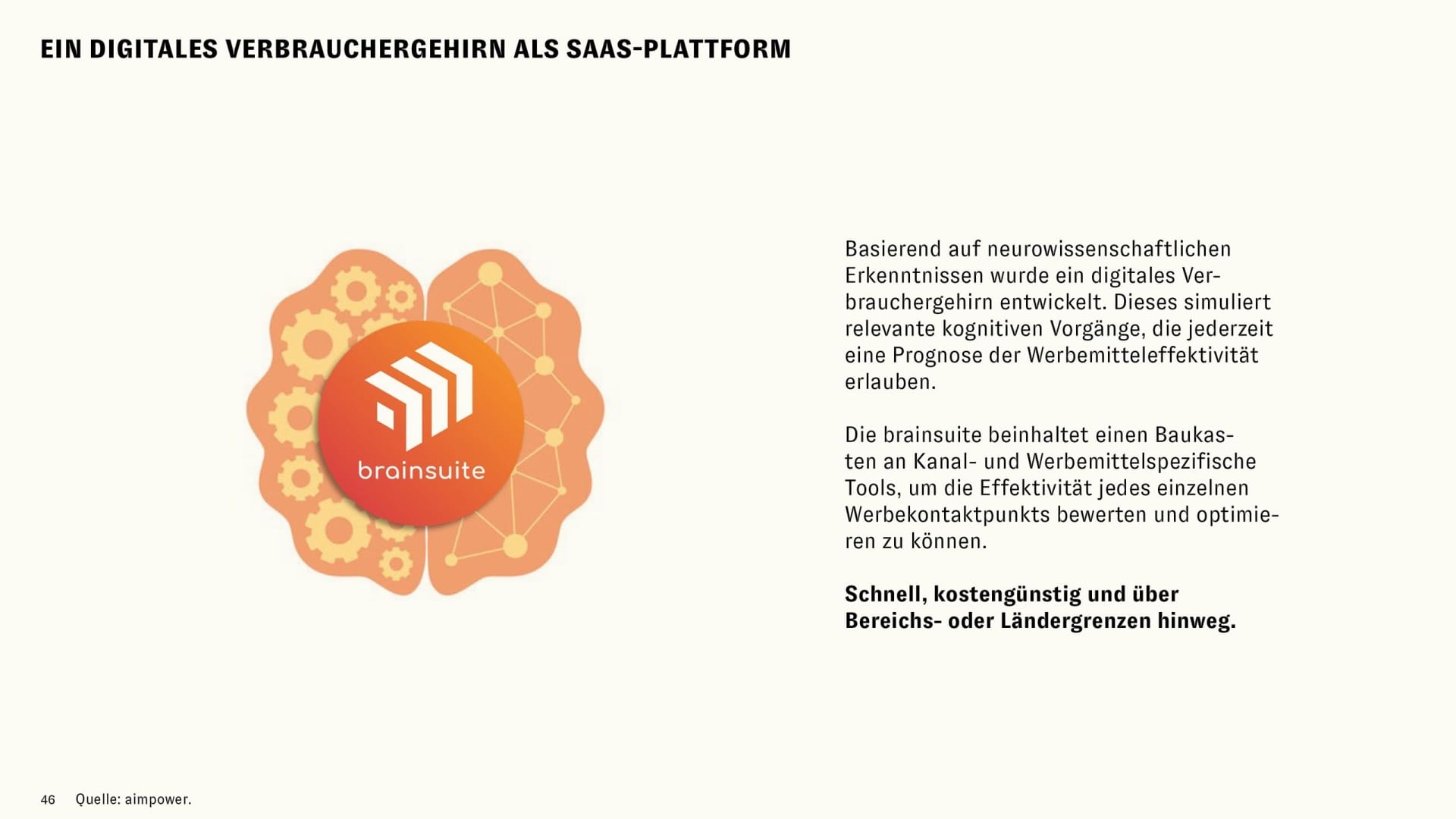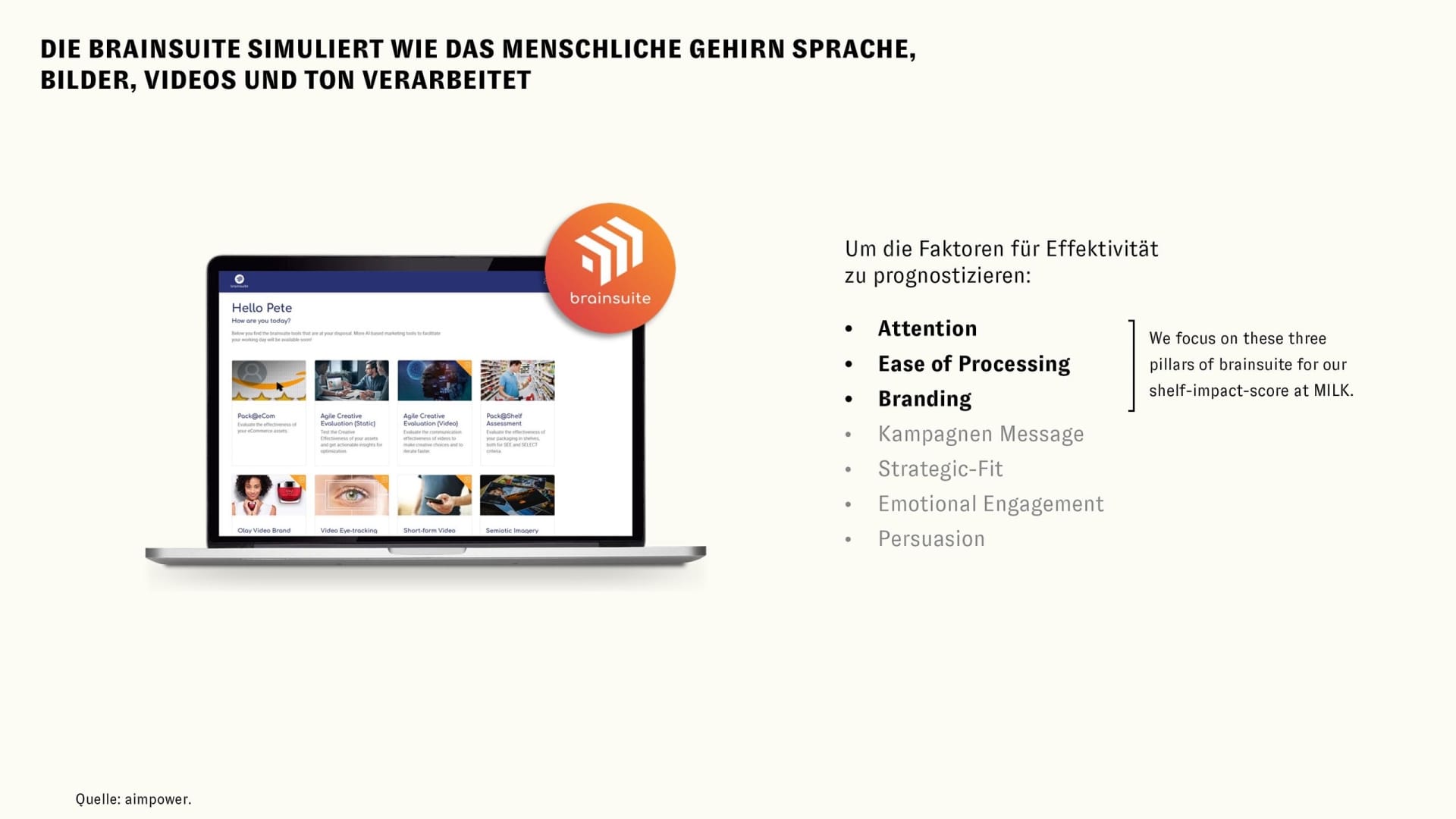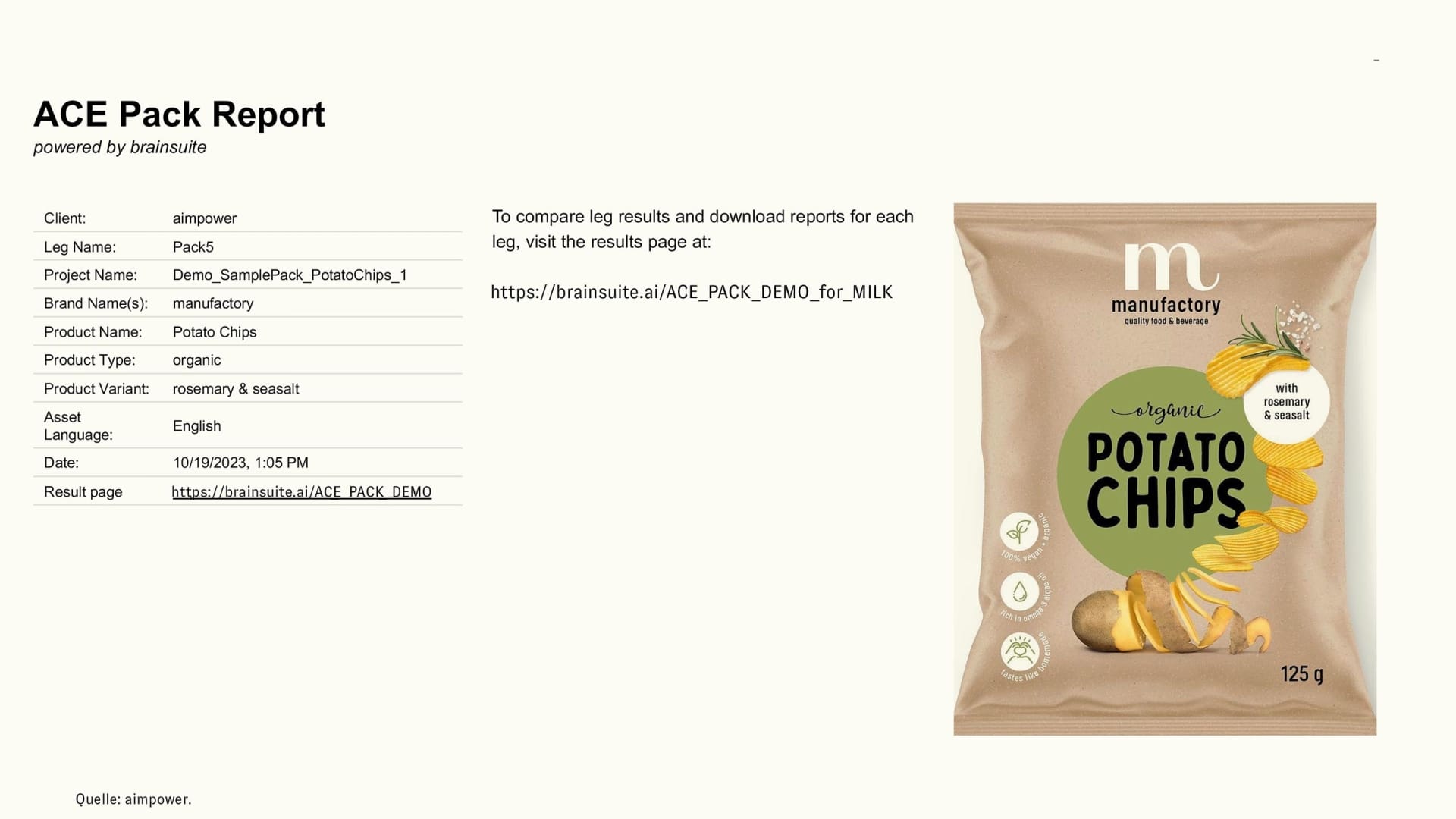PACK & SHELF
IMPACT SCORE
Together with our partner AIMPOWER, we offer customers in the packaging design process the opportunity to measure packaging layouts for their Packaging & Shelf Impact Score as part of a shelf test.
We attach great importance to the shopper perspective for decisions in the food packaging design process. This is because packaging often becomes the most important communication channel and a purchase decision is only made at the point of sale. Artificial intelligence now makes it possible to validate designs earlier and faster in the process with the help of our power tool – for example, through a digital shelf test.
AI-supported pack tests: how we measure the shelf impact of packaging
Good packaging design stands out – great packaging is bought. But what really stands out on the shelf? How does the target group react to colors, shapes, typography and placement? Our answer:
We call this: Shelf Impact Scores. A data-supported method for objectively evaluating packaging concepts – fast, scalable and without costly test markets.
What are shelf impact scores?
A shelf impact score evaluates the visual impact of a packaging design in a realistic shelf environment. Various factors such as contrast, visual guidance, visual hierarchy and logo placement are taken into account.
The analysis is based on an AI model that is fed by millions of real eye-tracking data. This allows human gaze patterns to be predicted with a high degree of accuracy – and designs to be optimized based on data.
Why AI instead of a focus group?
Traditional market research is expensive, time-consuming and often not very agile. Our AI-based method makes it possible to test several design variants within hours – with high informative value. The advantages:
- Realistic predictions thanks to algorithms trained on eye tracking
- Fast results – first data within 24-48 hours
- Scalable tests – for entire product ranges or individual products
- Quantitative and visual evaluation (heat maps, gaze patterns, scores)
This allows you to make data-based decisions about which design really holds its own on the shelf – and which should be optimized.
How does the AI pack test work at MILK.?
Our AI-supported testing solution is integrated into the design process and runs in several stages:
- Upload the designs: You provide us with different variants (e.g. packaging fronts).
- Simulated shelf environment: The designs are digitally embedded in a typical shelf scenario.
- AI analysis: The AI determines gaze patterns, heat maps and visual conspicuousness per design.
- Results report: You will receive a report with shelf impact score, strengths, weaknesses and optimization recommendations.
The big advantage: everything is based on validated attention models that simulate real consumer reactions – without any field studies.
What exactly does the Shelf Impact Score measure?
The score is based on several visual parameters:
- Initial attention: How quickly is the design noticed on the shelf?
- Total Attention: How long does the attention stay on the packaging?
- Brand visibility: Is the brand logo recognized – and where is it placed in the visual path?
- Message clarity: How clearly can claims, product type and other messages be understood?
These factors are weighted in a scoring model – depending on the objective of the brand or product category.
Validate design decisions – with data, not gut feeling
Whether it’s a new product, redesign or relaunch – with AI pack testing, you can validate your designs objectively and soundly. The comparison of several variants(A/B/C testing) and benchmarking against existing products on the market is particularly helpful.
The most important advantages at a glance:
- Recognizes early on which designs work – and which don’t
- Helps teams to make design decisions together on the basis of valid data
- Reduces the risk of undesirable developments
- Saves time, budget and avoids expensive relaunch failures
Integration into the packaging design process
At MILK., we integrate AI-based pack tests directly into our packaging design process. This results in solutions that are not only beautiful – but also effective.
Typical procedure:
- Strategy & design development
- Variant development & AI testing
- Optimization based on the test results
- Finalization & production release
Testing is not an add-on – it is part of a data-based, holistic approach.
FAQ – Frequently asked questions about AI-based pack tests
How reliable are the AI results?
Our analysis engine is based on over one million real eye-tracking data. The predictive power of the attention models is over 90 % accurate compared to actual test results. This makes the method ideal for pretests and design decisions.
Which packaging can be tested?
Basically all – whether food, beverage, beauty or non-food. It is important that a front design is available (e.g. mockup, draft, rendering). Complete shelf visualizations with competitors are also possible.
Can existing products also be analyzed?
Yes. Existing packaging can be simulated in the same way as new designs. This means that relaunches can also be prepared on the basis of data or existing designs can be optimized.
How quickly are the results available?
Usually within 48 hours of uploading the final files. It takes a little longer for larger product ranges or variants. The first heatmaps are often available after just a few hours.
Is this a substitute for traditional market research?
No – but a perfect complement. While focus groups provide in-depth insights, AI-based simulation allows fast, objective and repeatable testing – ideal for early design phases and decisions under time pressure.
What does a shelf impact test cost?
The prices depend on the scope (number of variants, simulation scenarios, report depth). We offer transparent package prices for individual tests – for larger projects we calculate individual offers.
For whom is shelf impact testing useful?
The method is particularly suitable for:
- Brands that launch new products or relaunch packaging
- Design agencies that want to secure or benchmark variants
- Product teams that need data-based arguments for design decisions
- Marketing and innovation departments with agile development processes
Whether start-up or global player – AI testing helps you stay that decisive step ahead.
Conclusion: AI makes packaging design measurable
Packaging communicates in milliseconds. If you want to know how well they perform, you need objective data. With Shelf Impact Scores, we provide a tool that combines design, marketing and product development – data-based, agile and effective.
